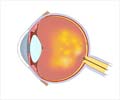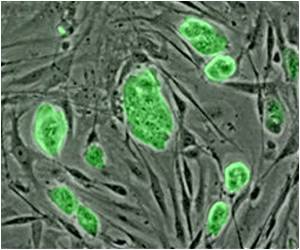Scientists in the UK are teaming up for a groundbreaking surgical therapy that could cure Age-Related Macular Degeneration (AMD).
Scientists in the UK are teaming up for a groundbreaking surgical therapy that could cure Age-Related Macular Degeneration (AMD).
The therapy, which uses cells derived from human embryonic stem cells to replace the faulty retinal cells that cause AMD, will be developed by the London Project to Cure AMD, a collaborative project.Trials based on this therapy, which could start in the next five years, will be a collaborative effort by researchers and clinicians at the UCL Institute of Ophthalmology, Moorfields Eye Hospital, and the University of Sheffield.
AMD is associated with defects of the retinal support cells – the retinal pigment epithelial cells (RPE). The rods and cones (the photoreceptors) in the retina, which are the light sensitive cells, depend for their survival on the normal functioning of these cells, and so failure of these cells leads to progressive loss of vision.
In addition, the disease often provokes a scarring process at the back of the eye leading to the formation of new blood vessels within the retina which subsequently leak fluid resulting in exudative or so called “wet” AMD.
Though there has been some success in controlling new blood vessel formation in wet AMD, currently there is no treatment that prevents the treatment of dry AMD.
Even in wet AMD, the treatment is only suitable for certain patients and is often only temporary.
Advertisement
Surgical procedures already developed and trialled in a number of patients using the patients’ own cells have illustrated that a cell replacement therapy can work.
“The London Project aims to deliver treatment for a disease which has no alternative therapy. Using stem cells – which are far more adaptable – can only improve success of what has already been achieved and in addition establish this as a global therapy,” he said.
“This is achievable as a result of bringing together a number of groups who previously were trying to solve the same problem in isolation. The Project aims to engage scientists, clinicians and the public to ensure success through actively attracting and promoting the inclusion of other laboratories, hospitals and institutions by an open access policy and by informing the public of progress,” he added.
Dr Lyndon Da Cruz, lead clinician and consultant ophthalmic surgeon, Moorfields Eye Hospital, said that the trial was important as it would try to find a cure to a hitherto untreatable condition.
“The Project is important as it develops a cellular based therapy for a currently untreatable condition. The beauty of this Project is that there are three specialist groups working in parallel; a team in Sheffield, the UCL Institute of Ophthalmology and Moorfields Eye Hospital,” he said.
“Working in conjunction, they will be respectively safety testing the cells in Sheffield, confirming that the cells are RPE cells and preparing them in a form for transplant at the Institute of Ophthalmology, and developing the strategies for the surgery and patient selection based on studies on transplanting autologous RPE (i.e. cells from the patients' own eyes) at Moorfields.
“By driving these in parallel it is felt that the development time will be significantly reduced. Given that AMD could affect up to one third of the population by 2070, and that the bulk of these will have dry AMD, the potential to create a treatment strategy for this condition is critical and may have a major impact on vision loss in the community,” he added.
"We are excited about the work of Professor Pete Coffey and his team regarding developments in the treatment of AMD. The London Project represents a real chance to tackle this untreatable condition and bring hope to many. It is marvellous to think that clinical trials could start within five years," said Professor Alistair Fielder, Senior Medical Adviser of Fight for Sight, the leading eye research charity.
Source: ANI
SRM/M








